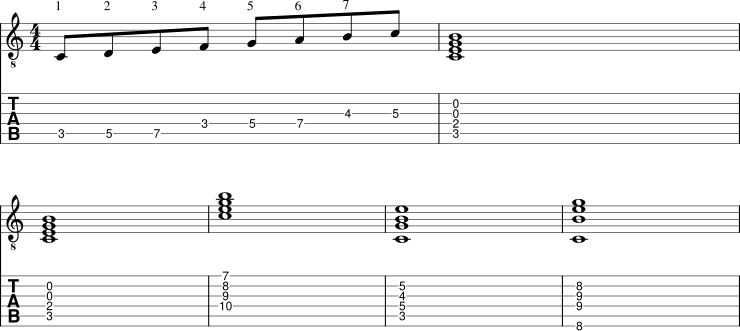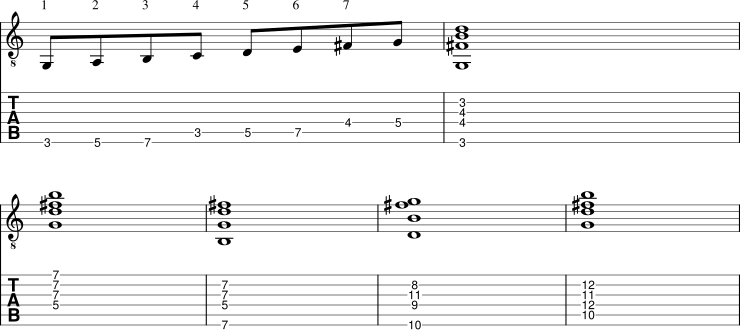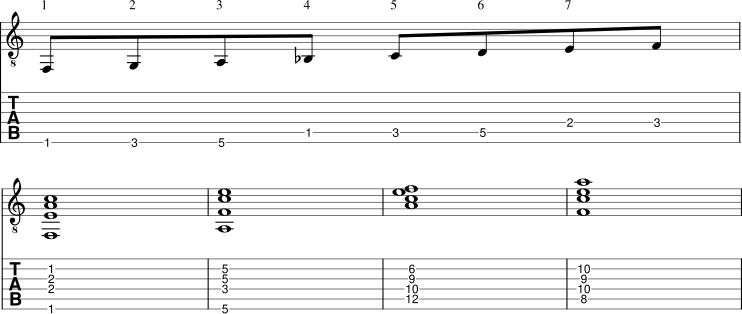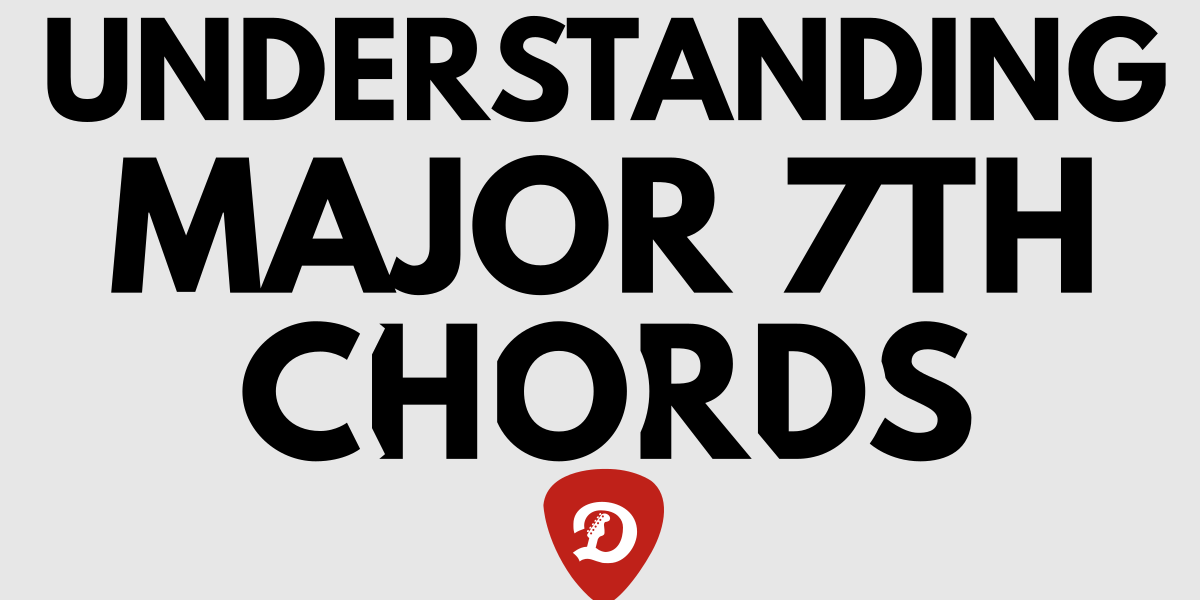Understanding Major 7th Chords
What a confusing mess music theory is! For a beginner, there really is just a big minefield of stuff to understand and absorb. Like a foreign language, first you need to understand just the simple idea of reading music, which students can struggle with for a long time, then….the theory of the why and how! Yikes. That’s a lot to deal without a roadmap or any idea how to start.
When I started studying guitar, most of the music I was interested was metal. Like most players, I spent most of my time trying to learn the songs I like ‘by ear’, which means, just listening to a song over and over, and picking apart as much of it as I could. Eventually, you can get really good at this, and with a killer ear, you don’t have to rely on music theory or reading……until you hit a wall and are forced to.
That moment will happen to everyone. The moment when you realize you don’t know as much as you thought you did. For most, it happens when they try to apply skills they learned to a situation where they don’t work. For me, it was playing metal and transitioning to a jazz/funk band. Most of the music I had to learn had totally different musical vocabulary that metal basically just doesn’t use the same way. Plus, I had to read significantly more!
You've Got Big Problems
2 big problems happened. One was that my ability to read wasn’t strong, because I was an ‘ear player’. What happened was that I was constantly behind at rehearsals, and really just kinda lost if we had to sightread a chart that I didn’t know. I really needed to improve on this, and fast. Now, I have a system I use for myself, and all of our students, that consistenly gives results. No mysteries anymore. Read about about that here.
The 2nd problem was that most, if not all of the chord symbols I saw meant almost nothing to me. I didn’t understand the theory, the why, or even the language it was drawing from. Some of this could be improved by listening to more of this music, but the reading was a big problem. Plus, I didn’t really know anyone I thought I could ask that knew about this stuff!
Part of knowing something really well is teaching it to other people. When you do this, then, you can examine what you thought you knew, and hone it even more to help other people who are asking the same questions you did.
The reason I tell you this is because if you’re reading this, I’ve been where you are, and understand. I literally have thousands of stories like this. So, if you’re here, and you’re asking, “when are you gonna get to the theory!”, then here we go!
What Are Major 7th Chords, and What Do I Care?
7th chords are a way to add more color to your songs. Either by spicing up your chords, your improvisations, your composition, or your solos. There are 2 ways to understand this material that are equally important. One is the theory of it, meaning, how to construct them correctly. The 2nd way is by ear, that is, hearing a major 7th, and knowing that’s what it is by sound alone.
If you want to have a more interesting palette of colors to pull from, you should learn major 7ths. If you are studying guitar (or really anything) and eventually plan to play with people as a job doing weddings, covers, theater work, studio work, parties, bars, etc, you should devote some time to learning more musical languge, simply so it’s a not a big surprise when you need to play something you don’t know or understand.
The Theory of It All
The theory of it is this, you take your major scale, we’ll do it in C major. Each note in the scale gets a number. C is 1, D is 2, E is 3, and so on. When we get to the 7th note, B, we now know what we need. We take a C major chord, and we also use the 7th, which is B. We end up with a 4 note chord that is spelled C – E – G – B. That is a C major 7th Chord. Check out the examples below of how some good voicings for this chord.
If you need examples of strumming patterns to apply to major 7ths, check out our book for free.

Let’s go over a few more examples, in different keys this time. G major is the one we’ll use next. So, same as before, we’ll play a G major scale, G – A – B – C – D – E – F# – G, and assign numbers to each scale note. We need the 7th degree of the scale, which is F#. Now we’ll play a G major chord, with the 7th added in, which becomes G – B – D – F#. Makes sense, right?
Now we’ll create an F major 7th chord. How do we do this? Same exact approach. If you understand the rules of music theory, they will work with every key. First, play the F major scale. F – G – A – Bb – C – D – E – F. Give a number to each note in the scale, then find the 7th note. It should be E. Stack that note on top of your F major chord to get the spelling F – A – C – E.


How To Apply:
The next thing you need to do is practice practical application. That is, either learning music that has this language in it, or creating stuff on your own that has it. I recommend trying out both. Pull out some Jazz charts from the fake book, randomly, and try to sightread what you find, paying special attention to major 7ths. One of the things you should also do is ignore all the extraneous extended chords in the fake book, as most of that stuff really doesn’t apply in real life. So, if you see a G13b9, just play G7, or whatever version of G you know.
1. Learn at least 2 voicings in every key. Use the examples above and transpose them to all keys.
2. Use a metronome to practice to clean timing and/or precision. Apply the concepts from 7 things to do in the practice room.
3. Read and play at least 12 songs that use Major 7ths more than 3 times. Look up ‘fake book’ or ‘jazz standards’ to get started.
4. Practice these 12 songs in all keys, using multiple voicings of the same chord.
5. Apply major 7ths with scale sequence exercises.
6. Then learn a tune or 12 that uses them. Learn the tune and the voicings in every key.
7. Write chord progressions that use Major 7ths in a creative way. Remember, just because Jazz uses them a particular way, doesn’t mean you have to!
8. Experiment with improvision over Major 7ths. What scales and patterns do you know that will work consistently? Practice in all keys.
Remember, if you have any issues with this material, you may need lessons! Book a lesson with us, we’ll be more than happy to help.






